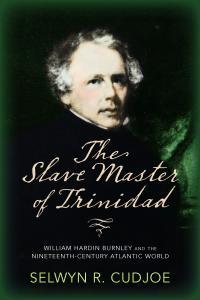Sat Maharaj and Martin Luther King
By Dr Selwyn R. Cudjoe
November 26, 2019
One radio host called my comparison of Sat Maharaj with Martin Luther King "sacrilegious" while a caller to another radio station wondered what had happened to Professor Cudjoe since 2011. "I had admired Professor Cudjoe but now I don't know what has gone wrong with him. Imagine his comparing Sat to Martin Luther King." These were some of the condemnations that arose from my remarks about Satnarayan Maharaj.
What were the offending words?
"Sat Maharaj is dead, long live his spirit. Some people have likened Sat Maharaj to Mahatma Gandhi. I prefer to compare him to Dr. Martin Luther King whose major contribution was to make the United States a more perfect union. Martin Luther King found a fragmented nation when he started his civil rights struggle for African Americans in the 1950s.
"Trinidad and Tobago was also a broken society in the 1950s. It was prone to leaving Indo-Trinbagonians out of the national discussion which was a point of contention between Dr. Eric Williams and Dr. Rudranath Capildeo during our Independence discussion at Marlborough House in London in 1960.
"Dr. Williams did his part by inscribing minority rights into our constitution. However, it was left to Sat Maharaj and others of his persuasion to keep up the fight for minority rights even though that minority is now a majority.
"Like Dr. King, Sat will go down in our history as one of the major architects in helping to perfect our union and to make ours a fairer society."
A majority of my African brothers and sisters felt I have offended to the highest heavens. "Sat, that racist, cannot be compared with Dr. King, that angel of civil rights struggles in the United States."
When King picked up his mantle in the 1950s, he was continuing a struggle for the equality of black people they started when they arrived in America. When America won its freedom from Great Britain in 1775, its Declaration of Independence began with the brave words: "We hold these truths to be self-evident that all men are created equal, that they are endowed by their Creator with certain inalienable Rights that among them are life, liberty and the pursuit of happiness."
Black people were left out of such a promise. They were kept as slaves until 1863 when a vicious Civil War was fought to maintain the union and which allowed them the possibility of sharing in the American dream. Many gallant black people fought for their liberation, including such luminous figures as Harriet Tubman, Sojourner Truth, Denmark Vesey, Nat Turner, Frederick Douglass, Booker T. Washington, W. E. B. Du Bois, and Malcolm X.
King continued that struggle for freedom. When he stood at the Lincoln Memorial and delivered his "I Have a Dream Speech," he made it clear that when President Lincoln signed the Emancipation Proclamation it was "a great beacon of hope to millions of Negro slaves who had been seared in the flames of withering injustice."
He continued: "When the architects of our Republic wrote the magnificent words of the Constitution and the Declaration of Independence, they were signing a promissory note to which every American was to fall heir. This note was a promise that all men-yes, black men as well as white-would be granted the inalienable rights of life, liberty and the promise of happiness."
When Bhadase Sagan Maraj entered the Trinidad scene in the 1950s, the colonial government was treating Indo-Trinidadians and Afro-Trinidadians with contempt and condescension. The SDMS noted: "Right up to the middle of the 20th century, East Indians in Trinidad and Tobago, though comprising 40 percent of the population, were treated as second-class citizens by the then colonial government" (Master & Servant: Bhadase Sagan Maraj)
Sat wrote: "We, as Hindus, are duty-bound to show our everlasting gratitude to the man [Bhadase Maraj] who brought light and literacy when there was only darkness and neglect, and was responsible in no small measure for releasing East Indians, and Hindus in particular, from the crippling bonds of ignorance and poverty."
Sat saw his role as continuing the fight to uplift of his people, particularly the Hindus, which he did for fifty long years.
Many white people saw King as a racist. His fellow ministers, even when he was in a Birmingham jail, did not understand why he went to Alabama to fight for Afro-American freedom. He reminded them: "Injustice anywhere is a threat to justice everywhere." In 1964 he made it clear that his duty was to remove the scourge of inferiority which many blacks in the South felt about themselves ("Why We Can't Wait").
King was not accepted by the whites who saw him as a rabble rouser while black people saw him as a courageous leader who had fought for their freedom. King died in 1968. In 2000 Utah became the last state to recognize MLK day by name and South Carolina the final state to make it a paid holiday.
Afro-Trinidadians wear a banner that says that the Indo-Trinbagonians are racists while we are free from every taint of racism. In our hours of quiet reflection we may want to ask why we are so resistant to giving Sat his due while Indo-Trinbagonians honor and respect his memory and what he did for them.
Sat and MLK fought for the rights of "their" people and, as a result, made their respective nations live up to the dreams of their nations' founders: creating a place where every creed and race finds an equal place."
This is the one thing that Sat and King have in common.
Professor Cudjoe's email address is scudjoe@wellesley.edu. He can be reached @ProfessorCudjoe.
Share your views here...

The Slave Master of Trinidad by Dr. Selwyn R. Cudjoe
|

